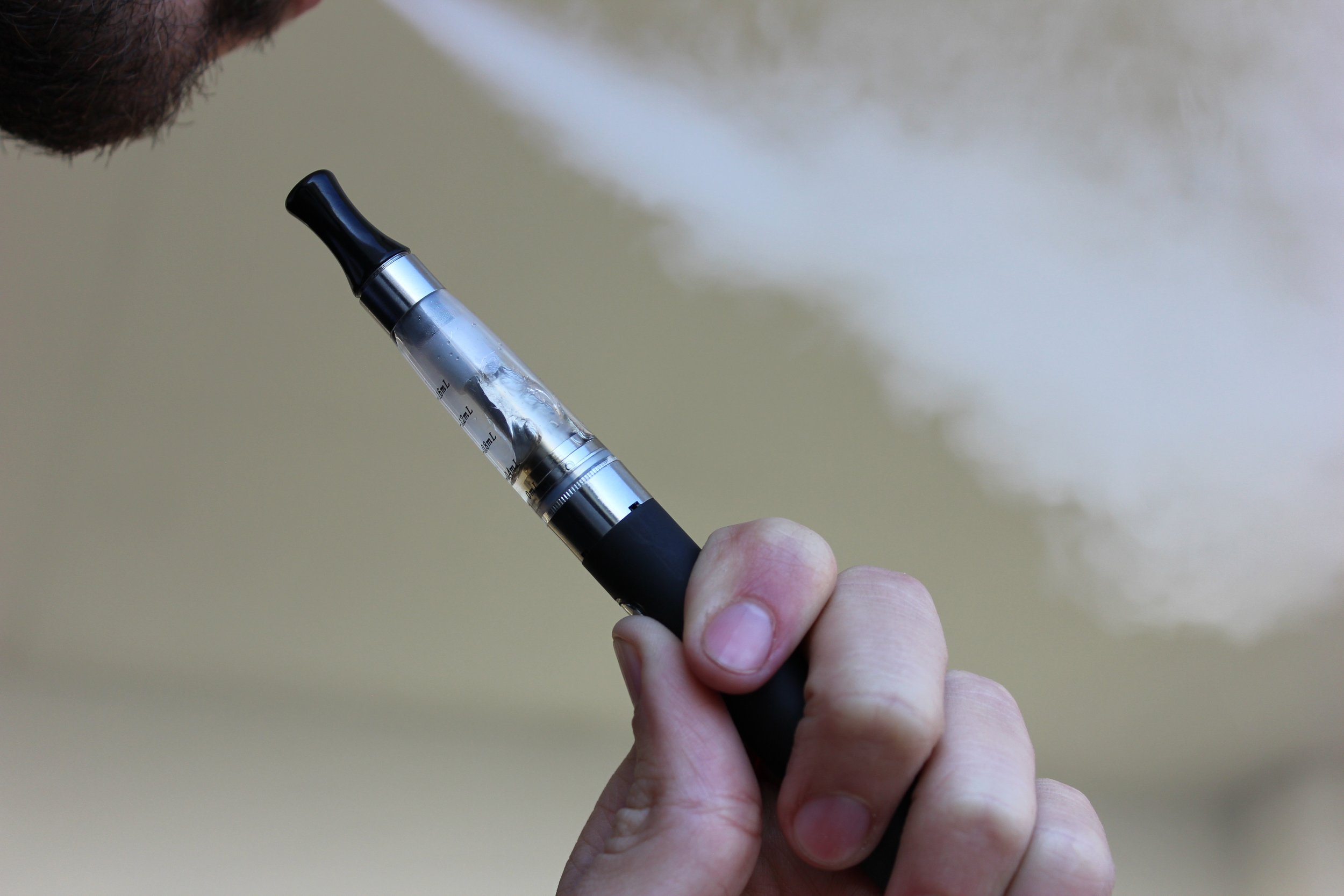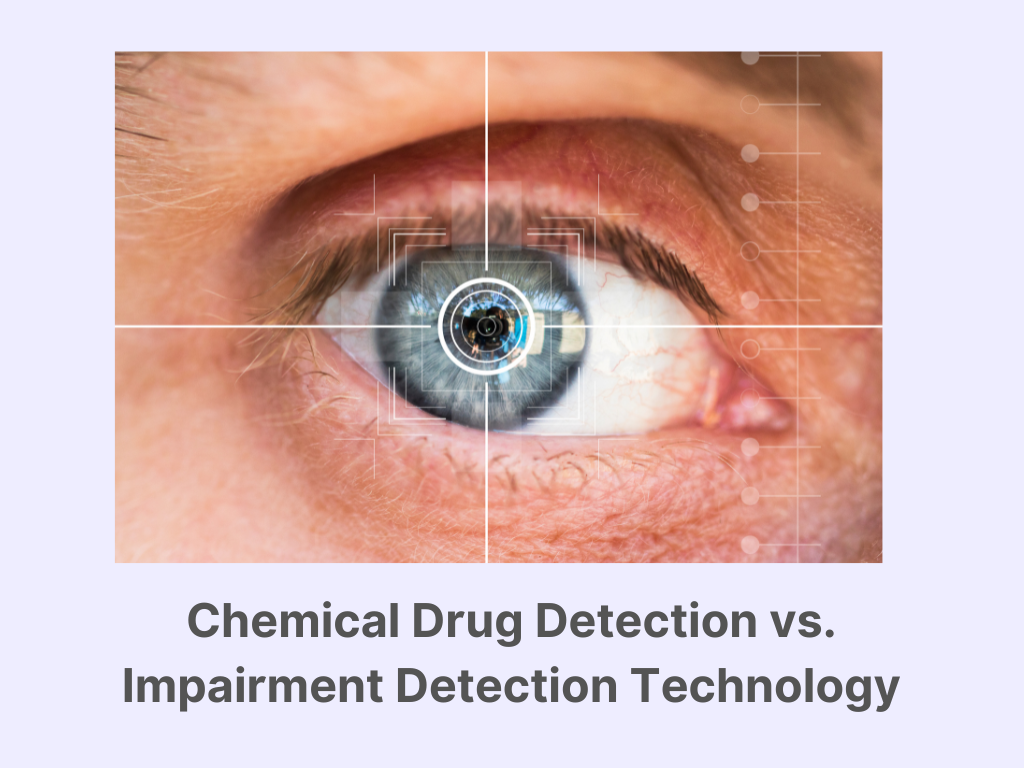Gaize vs. Marijuana Breathalyzers
The Marijuana Breathalyzer: Broken Promises and Limited Utility
After over a decade of promises from manufacturers, devices purporting to be marijuana breathalyzers have finally hit the market. We routinely hear from folks who are trying to decide between impairment detection technology, like Gaize, and these tools, so we thought a blog post would be useful. Although these devices are attempting to fill the need for a marijuana breathalyzer, they’re broadly missing the mark.
The desire for a marijuana breathalyzer has been around since before cannabis legalization even started. Since alcohol is detectable with a breathalyzer, law enforcement and businesses have been hoping for a device that can make policing that substance similarly easy. For about the last decade, companies have attempted to build a marijuana breathalyzer to fill this market demand. Hundreds of millions of investor dollars have flowed into the space, but there’s been little to show for it. Unfortunately, there are a few reasons that this has been such a challenging problem, all stemming from the following fact: There is 12 million times less THC in a breath sample compared to alcohol.
Complexities of Chemical Analysis
Since there is so little THC in the breath and since THC exists in various forms, separating it from other breath components like water vapor and carbon dioxide poses a significant technical challenge. Traditional breathalyzer technology is totally inadequate to accurately isolate and quantify THC. This has precipitated the need for new analysis technology. These combined factors create a complex equation hindering the development of a reliable and widely accepted THC breathalyzer. The products on the market today are far from meeting the mark that safety leaders and law enforcement are looking for.
The Fleeting Nature of THC in Breath
Unlike alcohol, which is transmitted to the lungs from the blood and remains detectable in breath for hours, THC passes through breath quickly and in radically smaller amounts. Its presence becomes negligible soon after consumption, making accurate measurement a major technical hurdle. Alcohol by comparison is easily quantifiable in the breath of alcohol consumers. The amount of alcohol closely mirrors the amount of impairment being experienced, thus making an alcohol breathalyzer an appropriate tool. This is to say nothing of methods of ingestion like edible THC, and vaped THC. To date, there has been no compelling data showing a THC breathalyzer is effective for either of these methods of ingestion.
Breath-THC Content and Impairment
The other obvious problem with a marijuana breathalyzer is that even a functional one would not be useful in detecting marijuana impairment. This is because there is no amount of THC in the body, or breath, that is correlated with a predictable level of impairment. Rather, marijuana breathalyzer companies try to pitch the product as a “recent use test” and attempt to equate recent use with impairment. That’s not true.
As any experienced cannabis user will tell you, the tolerance effects of the drug are substantial. Recent scientific studies have validated this phenomenon, including a study that was published in 2024 showing no impairment from medical cannabis patients when using their prescribed level of THC (source). This inconvenient reality completely destroys the idea that “recent use” of THC should be treated as impairment. Just as responsible alcohol users can have a single alcoholic beverage and drive safely, responsible cannabis users can use a small amount of the drug and remain safe and unimpaired.
Single Chemical Detection
When a business or law enforcement agency is doing a drug test, it’s usually not just one substance that they’re looking for. Marijuana breathalyzers are only testing for one substance - Delta-9 THC, the primary psychoactive molecule in cannabis. That means that any other impairing substance will be missed entirely. This is a very difficult pitch in a time where rapid urine and rapid saliva tests exist that can test for many drugs simultaneously at a fraction of the cost.
Even in the case where a viable, dependable instant use marijuana breathalyzer was created, it’s still only looking for Delta-9 THC. In today’s complex and ever expanding drug climate, that’s just not enough.
The Reality of Marijuana Breathalyzers Today
Despite a product having been released, those looking for a breathalyzer for THC will be sorely disappointed with what’s on the market. Rather than quantifying the amount of THC in the breath, the device only captures a breath sample. That breath sample must then be packaged and shipped to a lab for analysis, meaning that the customer doesn’t have results for at least two days. When there’s a need to evaluate marijuana use, finding out days later is hardly a help.
Here’s a run down of the current solution:
Very expensive equipment plus high costs per test
At least 48 hour waiting time before results
Single substance detection (Delta-9 THC)
Why is this the case?
Researchers at the University of Colorado Boulder have shed light on the intricate challenges involved in creating an accurate and dependable THC breathalyzer. Their findings underscore the complexity of this endeavor, which has proven to be an elusive goal thus far.
In a recent study, the CU Boulder team used a mobile laboratory to collect breath samples from participants in their homes, both before and after cannabis consumption. The high-tech analysis of these samples unveiled a perplexing and inconsistent picture.
While some participants exhibited the expected rise in THC levels in their breath following cannabis use, others defied this pattern, showing no discernible increase or even showed a decrease in THC concentrations after consumption. This variability, influenced by factors such as individual metabolism and the timing of breath collection, poses a formidable obstacle in the quest for a reliable THC breathalyzer.
Adding to the complexity is the intricate molecular structure of THC itself and its remarkably low concentration in breath samples. These characteristics necessitate the use of advanced laboratory equipment and techniques to isolate and accurately measure this elusive molecule, highlighting the technological hurdles that must be overcome.
Here are the top marijuana breathalyzer companies. Please give them a look and contact us if you’d like to discuss the use cases for Gaize when compared to these THC breath testing solutions:
Cannabix - This technology is not yet on the market, but uses analysis technology that is unique and patented by the company called FAIMS. Like Hound Labs, breath cartridges are collected and then shipped out for analysis, so it doesn’t exactly meet the need for an instant point of collection breath THC test.
Hound Labs - After years of delays, the Hound Labs Cannabis Breathalyzer has finally hit the market. Sort of. Hound Labs brought a breath capture device to market, but the machine doesn’t actually read the content of the breath or produce results. In order to get results, you have to ship the breath cartridge to an outside analytical laboratory and wait for them to test it - a multi-day process. That’s far from the promise of an instant breath THC testing device.
ElectraTect - This technology is not yet on the market. It uses a fuel cell, much like traditional alcohol breathalyzers, to oxidize THC and then measure the current produced to measure it. While this company has demonstrated that the reaction is possible, the technology is years away from being viable.
How does Gaize compare to Marijuana Breathalyzers?
Gaize is impairment detection technology. It works by measuring how the body is responding to a drug, rather than look for traces of the drug itself. This is incredibly important for drugs like marijuana in which the presence of the drug is not predictive of impairment. Since THC and its metabolites linger for so long in the body, safe and responsible cannabis users are routinely penalized unfairly. Recent use THC tests, like breathalyzers, don’t help this challenge.
The solution is to measure impairment. Only through measuring impairment will cannabis users be treated fairly and safety be maintained. Gaize utilizes the well known and trusted Drug Recognition Expert eye tests in measuring impairment. These tests are rapid, science backed, and have been used in all 50 states to by law enforcement. Gaize has democratized these tests for the first time, and makes them available to any business with no expertise required. These tests are conducted totally automatically and produce objective results backed by video evidence.
Impairment detection has long been seen as the panacea for marijuana users as it allows for safe and responsible use, while eliminating the fear of adverse action from traditional THC tests. Gaize is in use today in both law enforcement and businesses.
Gaize offers the following:
No per test fee, reasonable equipment cost
Instant results
Sensitive to impairment from marijuana, alcohol, opiates, stimulants, and more
Can Gaize be used in conjunction with a marijuana breathalyzer?
Yes, we strongly encourage the use of chemical drug testing to detect the presence of an impairing substance in combination with any impairment detection technology. This will create the strongest body of evidence possible before adverse action is taken.
In the case of a marijuana breathalyzer, it could certainly be one chemical test that’s used, but the single substance that they look for is usually not enough. Oral fluid tests appear to offer a significantly superior path forward for chemical drug testing when compared to breathalyzers. They can test for vastly more substances, and the technology has been shown to be reliable for many years.
Conclusion
The lack of a clear link between detection of THC and impairment is truly confounding for all chemical marijuana tests. Even if THC is detected, it has no bearing on the impairment being experienced, if any. Cannabis affects individuals differently, and its effects can linger long after the "high" fades, making it difficult to establish a correlation between THC readings and driving or working ability. This long established scientific fact has led experts in the field to look for ways to measure impairment rather than prior use.
While a widely accepted and accurate THC breathalyzer remains a hopeful future target, the journey towards achieving this goal is paved with intricate scientific and technological obstacles. However, it’s possible to measure impairment from marijuana reliably today. Gaize, and potentially other impairment detection technologies, offer a clear path forward for those that need to verify fitness for duty and safe driving ability in a cannabis using population.
We’ve long said that if marijuana is going to be legal, we must be able to maintain safety. Gaize facilitates this with an evidence-backed, rapid and defensible solution.


